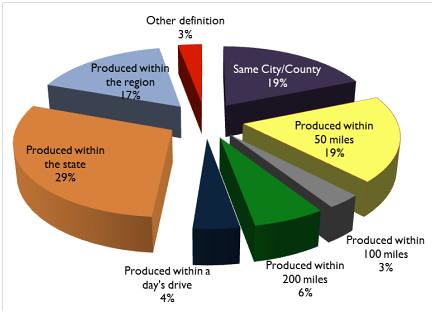USDA’s Food and Nutrition Service (FNS) recently released its 2009-10 School Food Purchase Study, which provides national estimates of the quantity, value and unit price of food acquisitions by school districts participating in the National School Lunch and School Breakfast programs. This year, the Survey for the first time asked specifically if school districts were purchasing local food and included questions about the total value of purchases and the major items purchased.
School district responses provide an important baseline for tracking the national progress of local food purchases by school food service programs. The responses showed that about 2 out of every 10 school districts surveyed purchased local produce for school meals during the 2009-10 school year, based on responses from a nationally representative sample of 416 school district food service directors about practices for purchasing food for school meal programs. An additional 12 percent indicated that they are in the process of developing a program for buying locally grown produce.
When asked how they define “locally grown,” for the largest group of respondents, 29 percent, local meant produced within the state. For 19 percent, produce was locally grown if produced within the same city or county, for another 19 percent, if produced within 50 miles, and for 17 percent, local meant produced within the region. For a few respondents, produce was locally grown if produced within a day’s drive, within 100 miles, or within 200 miles.

In districts that reported procuring local produce, local purchases accounted for 5 to 12 percent of total food costs. Food service directors were asked to name the top 5 items they buy by dollar value; apples, tomatoes and lettuce were the most frequent items named, with potatoes, oranges, cucumbers, peppers, pears, watermelon and peaches rounding out the top ten.
Helping schools find and procure local and regionally produced foods is a key priority of the Know Your Farmer, Know Your Food initiative and the focus of USDA’s farm to school efforts.
The coming years will be an exciting time to track farm to school progress. During the 2012-13 school year, USDA will conduct a nationwide census of farm to school programs, asking schools to tell us about local buying well beyond produce. We look forward to sharing additional updates as we continue to help food producers of all kinds enter the school food market.



